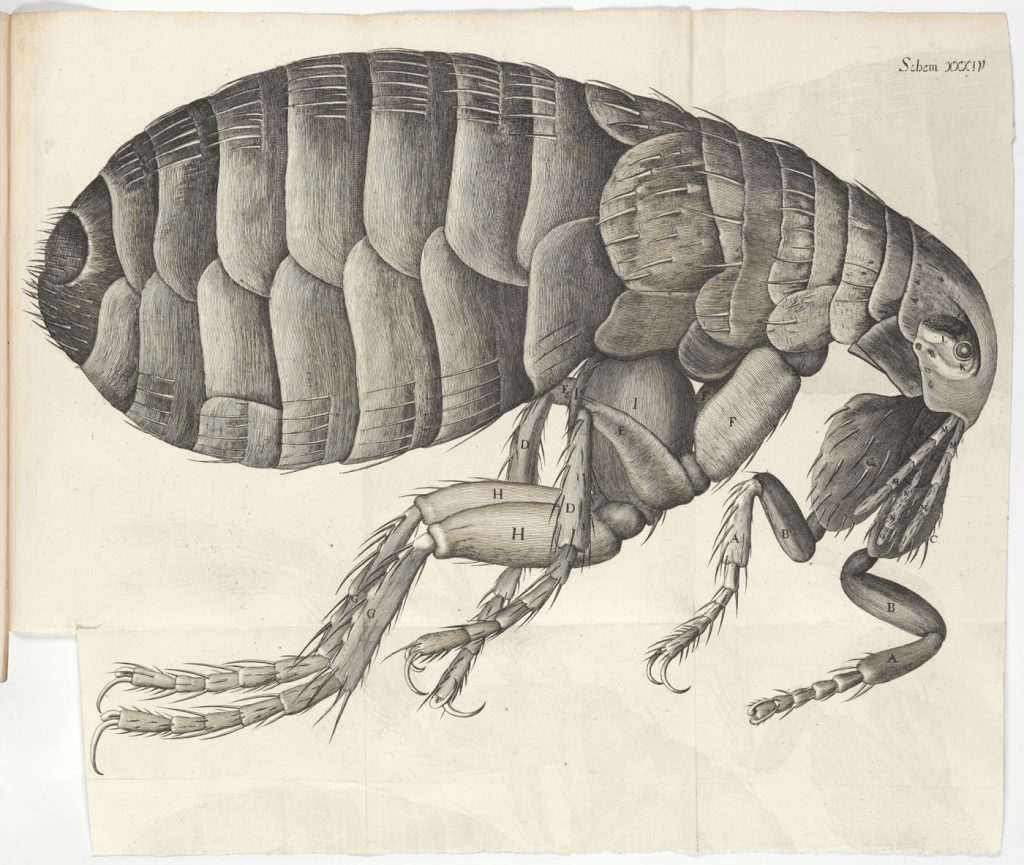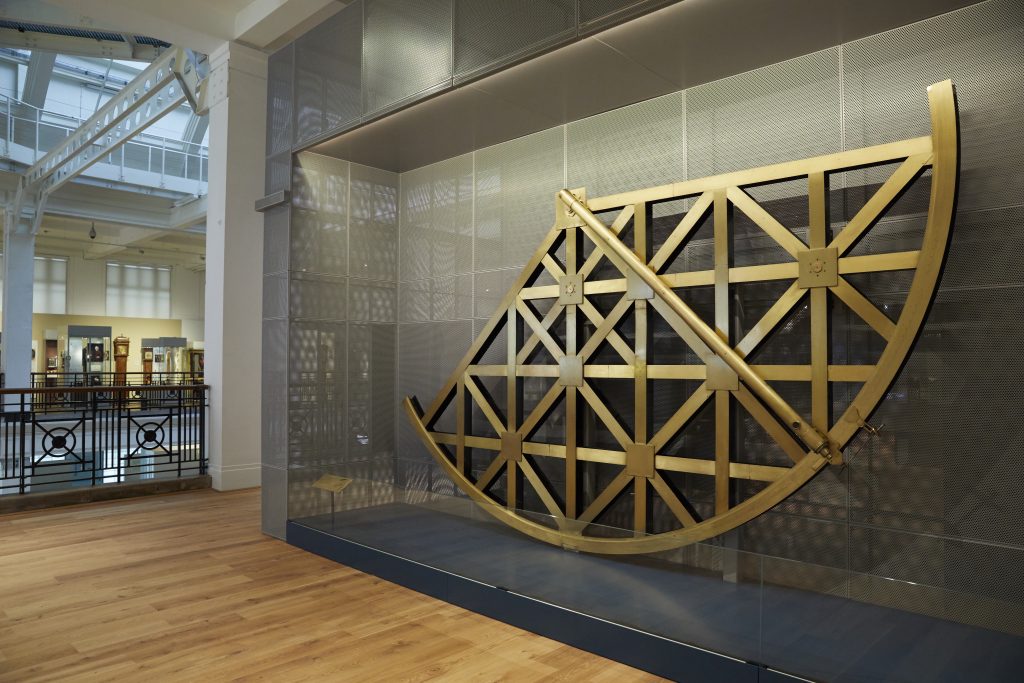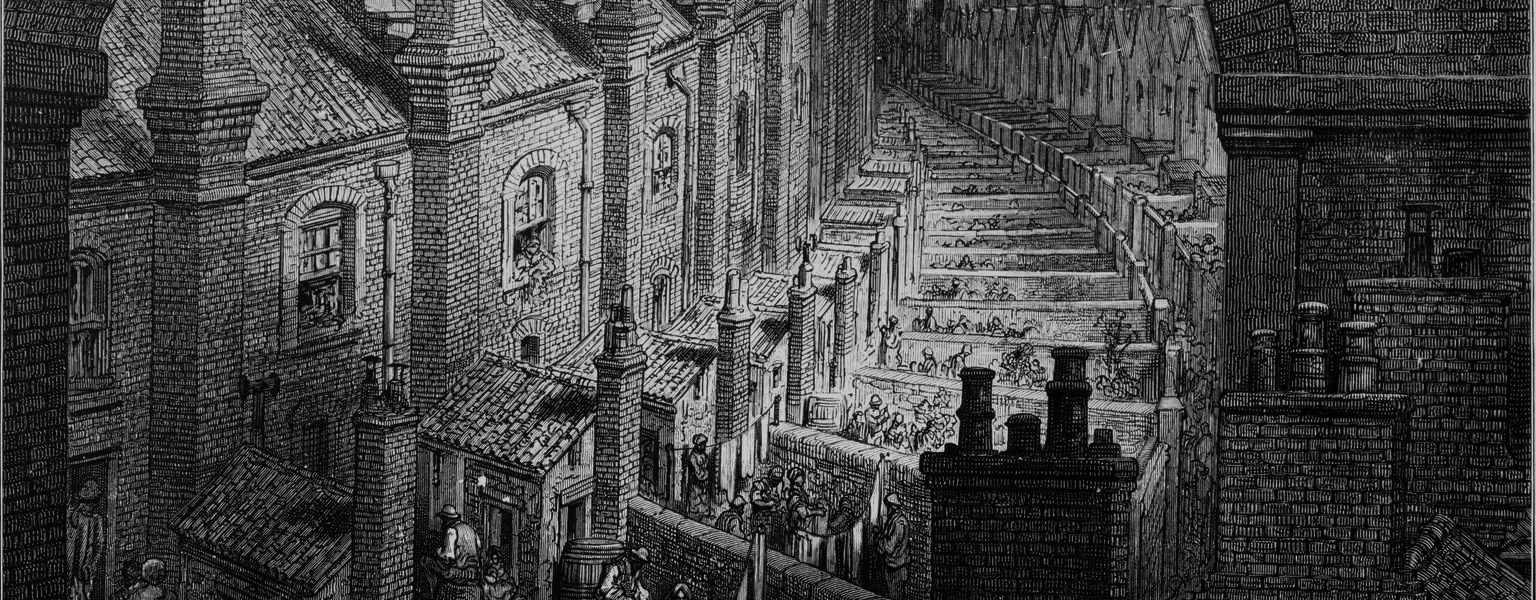In 1550, London was a rapidly expanding commercial city, with a relatively modest position on the world stage. By 1800, it had become the global city and world-leading centre of science it is today.
We look at some of the scientific discoveries and innovations that helped that momentous transformation.
New ways of seeing

A contemporary of Sir Isaac Newton, Robert Hooke was Curator of Experiments at the Royal Society in London and Professor of Geometry at Gresham College.
In 1665, he published Micrographia, his pioneering book featuring observations made with a microscope. It included spectacular enlargements of insects, plants, minerals, and household objects.
Micrographia contained precise drawings and descriptions of his observations which contributed to shifting many scientific paradigms at the time. In his study of petrified wood, Hooke noticed small regular compartments which prompted him to coin the term ‘cells’ to describe the basic unit of life.
Discover Hooke’s very own microscopes in our collection with a blog by Curator of Scientific Instruments, Jane Desborough.
London’s sewer king

With London’s population more than doubling between 1800 and 1850, existing systems of human waste collection, removal and disposal were being overwhelmed. There was also a growing understanding that the health of the city, and its citizens, were in urgent need of improvement.
Joseph Bazalgette’s solution was a system that channeled sewage and wastewater through miles of tunnels into a series of main intercepting sewers. Assisted by pumping stations, they slowly transported waste eastwards where it was ejected into sections of the Thames where it would be swept out to sea.
Read more about London’s “Sewer King” in a blog by Curator of Community Health, Stewart Emmens.
Looking up to the sky

On 22 September 1761, the 23-year-old George William Frederick was crowned at Westminster Abbey.
The young king’s interest in science, known then as natural philosophy, first developed through his childhood education but continued well into his adult life. In 1769, almost a decade into his reign, he had his own private observatory – the King’s Observatory – erected in the Old Deer Park at Richmond.
Discover more about one of the grandest scientific instruments from this observatory, made by maker of mathematical instruments Jeremiah Sisson, in a recent blog by Assistant Curator Matthew Howles.
Inspired by what you’ve read today? Visit the Science Museum this autumn and explore a season of free exhibitions and events that continues this conversation and asks the big questions.
